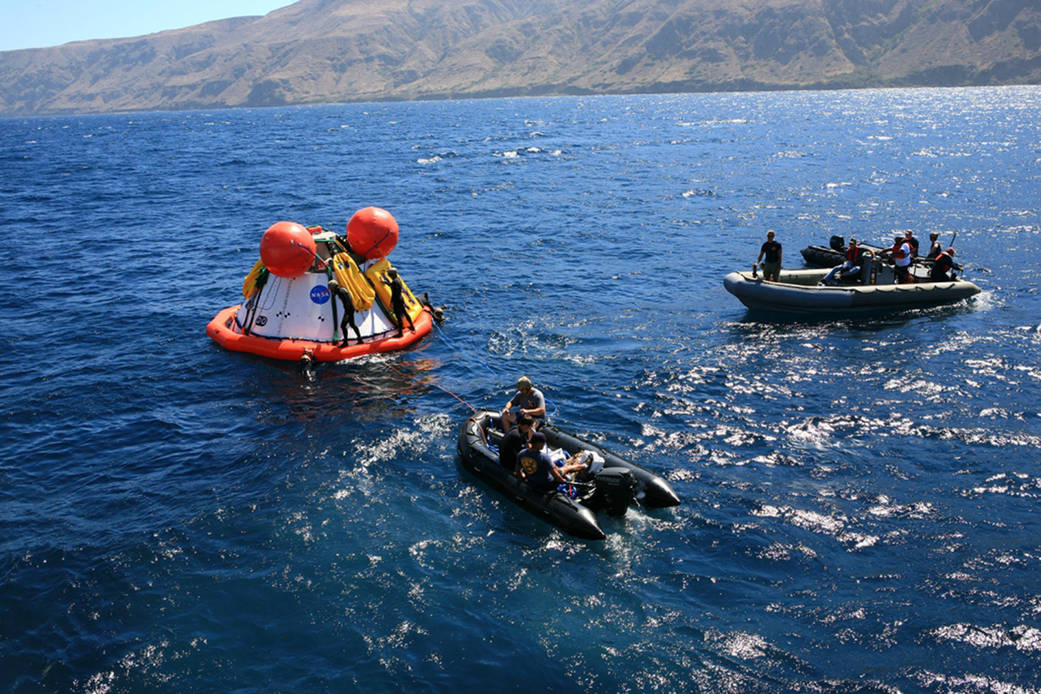Offshore of San Diego, California, a mockup of NASA’s Orion spacecraft floated in the Pacific Ocean waiting to be recovered. The mockup, designed and built at NASA’s Langley Research Center in Hampton, Virginia, is a life-size test version of the spacecraft and is being used to simulate the recovery of Orion after it splashes down in the sea following its first spaceflight, Exploration Flight Test-1.
NASA, Navy and Lockheed Martin conducted a full dress rehearsal for Orion recovery and retrieved the spacecraft to a flooded portion of the USS Anchorage. The recovery test in San Diego allowed the team to build their knowledge base of how a capsule recovery differs in calm and rough seas, depicting the spacecraft’s limits and abilities. The recovery team practiced in calm seas during an August 2013 Stationary Recovery Test in Virginia.
Testing prepares the team for the two-orbit, four-hour mission that will launch Orion atop a United Launch Alliance Delta IV Heavy rocket. Orion will reach an altitude of approximately 3,600 miles above Earth’s surface, reentering the atmosphere at a speed of near 20,000 miles per hour before landing in the Pacific Ocean. The unpiloted flight test will help engineers evaluate the systems critical to crew safety, including the heat shield, parachute system and launch abort system. Orion is designed to take humans to destinations never explored by humans, including an asteroid and Mars.
Photo credit: NASA/Kim Shiflett



























